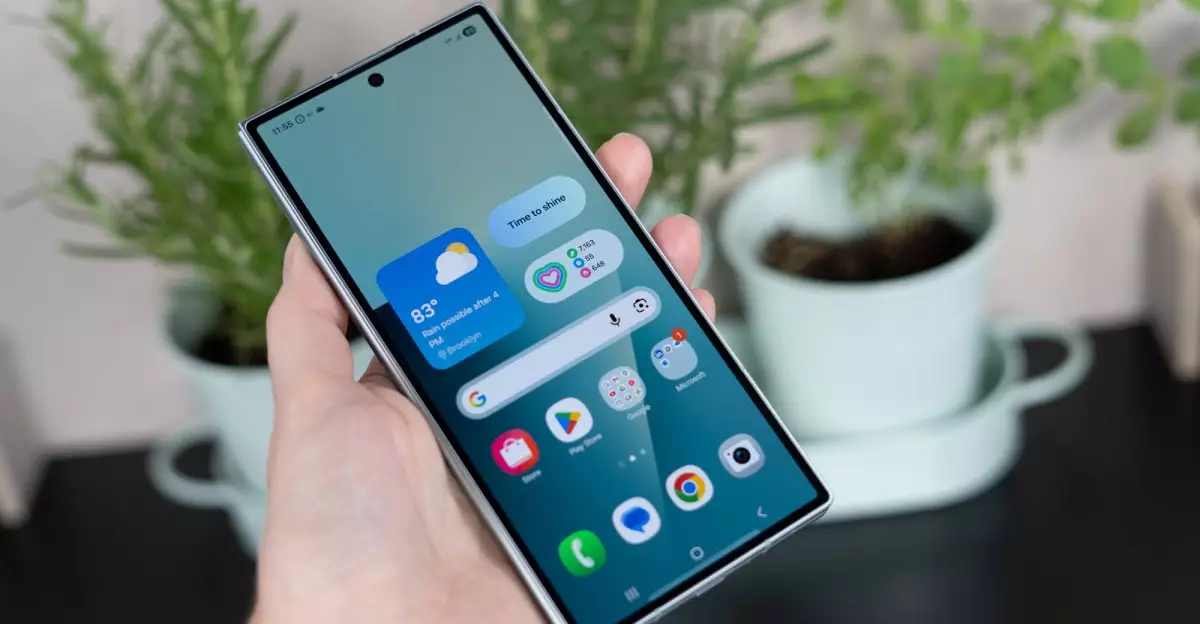The Samsung Galaxy Z Fold 7 isn’t just another smartphone — it embodies a leap forward in the evolution of mobile devices. While on the surface it might seem like yet another high-priced gadget, its innovations signal a shift towards more refined, versatile, and user-centric smartphones. With its ultra-slim profile, larger outer screen, and cutting-edge features, the Z Fold 7 challenges traditional notions of what a phone can be. However, the true story lies not only in its hardware excellence but also in the strategic ways Samsung and retailers are positioning it for tech enthusiasts and early adopters. As an insightful consumer, I must critically assess whether this device justifies its hefty price tag and how the promotional landscape influences its market reception.
Redefining Compact Power with a Slim Profile
What immediately sets the Z Fold 7 apart from its predecessors is its groundbreaking thinness. At just 8.9mm when folded, it feels more like a flagship device than a bulky foldable. This attention to design detail reflects Samsung’s understanding that a foldable phone needs to balance size, portability, and function. For years, foldables have struggled with bulkiness, but Samsung appears to have mastered the art of making a device that is both sleek and functional. The 6.5-inch outer display offers a convenient, almost traditional, phone experience—if only for the fact that it looks and feels less bulky than earlier foldables. Still, the purchase cost remains a barrier, as the starting price hovers around $2,000, making it clear that Samsung targets a very niche segment willing to pay a premium for innovation.
Critically, the technological achievement here certainly pushes boundaries, but it also prompts a question: is the device just a luxury gadget, or does it provide tangible benefits that fundamentally enhance daily life? For many, the answer hinges on the foldable’s usability, durability, and ecosystem integration—all points where Samsung has traditionally had room for improvement.
Traction Through Strategic Trade-In and Promotions
The promotional tactics surrounding the Z Fold 7 reveal a lot about the smartphone’s market positioning. Samsung’s aggressive trade-in offers, which can slash the price in half—down to about $999—are designed to lure consumers who might otherwise be hesitant to spend such a premium. Up to $1,000 in credit for trading in last-gen models adds a layer of immediate tangible benefit. But the real power move is the installment plan dividends offered by major carriers like AT&T and Verizon. Promising up to $1,100 in monthly credits over 36 months, these schemes effectively spread the cost over multiple years. They reflect a strategic approach: Samsung and carriers are trying to soften the blow of an exorbitant upfront price by making the device accessible over time.
However, from a critical lens, this method raises questions about consumer debt and the risk ofBuyer’s Remorse, given the device’s high cost and the complexity of trade-in qualifications. Telecom trade-in offers often come with fine print, and while they mitigate the initial out-of-pocket expense, the long-term financial implications should not be overlooked. Moreover, the fact that certain trade-in conditions require “any condition” phones, regardless of age, seems too good to be entirely transparent, as assessing device value can be tricky.
The Perks: A Double-Edged Sword
Promotions like Samsung’s $50 accessory credit or the bonus $300 gift card are designed to incentivize purchases, especially for those considering accessories like earbuds, watches, or cases. Yet, the “use it or lose it” stipulation demonstrates a rather aggressive push to convert these promotional credits into real use within a limited window. Consumers who lack clear purchase plans for accessories might find these offers less attractive than they seem at first glance.
Furthermore, the availability of faster delivery options and bundled deals varies significantly depending on the retailer. For instance, some sites are offering 512GB models for no extra charge—an unusual plus in a device that commands a steep price—yet others are sticking stubbornly to the base price. This inconsistency can influence purchasing decisions, revealing the often-hidden game of retail strategy that customers must navigate.
Does the Z Fold 7 Live Up to Its Potential?
While the Z Fold 7 boasts technological sophistication, its true value as a next-gen device depends on user expectations. It offers a device that behaves almost like a compact tablet with a phone’s convenience, which is appealing but also provocative of skepticism. Can a device with a starting price near $2,000 genuinely redefine what we expect from smartphones, or is it merely a status symbol for the well-heeled?
In my critical opinion, Samsung’s innovation is undeniable; it is shaping what future mobile experiences could look like. Still, the device’s high cost and the promotional hype leave many consumers questioning whether the foldable’s transformative benefits justify the luxury price tag. The market for such devices will likely remain niche until they become more affordable and demonstrate exceptional daily utility comparable to traditional smartphones.
Ultimately, the Galaxy Z Fold 7 encapsulates a bold step into the future of mobile technology. But whether it becomes a ubiquitous gadget or remains a high-cost novelty will depend largely on consumer reception, ongoing innovation, and the smart use of strategic promotions. As early adopters and tech aficionados pounce on offers, they should remain critically aware that premium innovation often comes with a hefty premium—something that’s worth considering before pressing that “buy” button.

